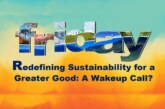
Dr. Arvind Kumar*
In a world reeling from economic uncertainties and shifting power centres, India’s steady ascent to becoming the world’s fourth-largest economy marks a defining moment in global history. With a projected nominal GDP of $4.187 trillion by 2025–26, India is not only surpassing Japan but also signalling a broader transformation where growth, geopolitics, and sustainability increasingly converge in the Global South. Powered by a booming digital economy, resilient domestic demand, and strategic integration into global supply chains, India is rewriting the global economic order. Yet, behind this headline lies a complex narrative—one of contrasts and challenges.
While the GDP milestones are historic, per capita income remains modest, inequalities persist, and millions are still outside the formal economy. As the country pushes forward with initiatives like Atmanirbhar Bharat, climate-smart agriculture, cooperative farming, basin-wise and wetland-wise planning, and education systems aimed at fostering self-employment, the real test lies in translating economic momentum into inclusive and sustainable transformation. India’s future depends not just, on how fast it grows, but on how wisely, equitably, and sustainably it does so. Nevertheless, as India steps into this pivotal global role, we must ask ourselves that what this milestone truly means for India’s 1.4 billion citizens, many of whom are yet to feel the full benefits of this economic surge.
This imbalance reflects the broader reality of India’s two-speed economy. A growing segment of urban professionals, entrepreneurs, and investors is reaping the benefits of liberalisation, reforms, and global integration, enjoying income levels and consumption patterns on par with developed economies. In contrast, a large portion of the population remains trapped in informal or low-income work, with limited access to capital, skills, or social mobility. This divergence is not a recent development but one that has deepened over time, producing growth that is structurally uneven.
As India steps into this historic role, these questions demand urgent attention-
Will the benefits of growth reach rural heartlands, marginalized communities, and the informal workforce?
How can horizontal thinking, sustainability, and inclusivity be embedded into every sector?
Can India’s development story become a blueprint for both scale and sustainability in the Global South?
Beyond numbers of progress
The rise in GDP presents a dichotomy when contrasted with India’s per capita income, which stands at a modest $2,934. highlights deep-rooted inequalities. For comparison, the US boasts a per capita income of $89,105, Germany $55,911, and China $13,657. This disparity reflects both India’s vast population and the persistent challenge of ensuring that growth benefits all citizens. International institutions such as the IMF and World Bank have praised India’s macroeconomic fundamentals, citing favourable demographics, resilient domestic demand, and a strategic role in global supply chains. India’s services sector especially digital services and its growing manufacturing base have been identified as key drivers of this progress. Initiatives like Digital India, Make in India, and Atmanirbhar Bharat have catalyzed innovation and value addition. Still, agriculture, which supports nearly half the population, contributes only 16% to GDP, pointing to productivity gaps and the need for further reforms.
India’s fiscal landscape remains complex. While economic expansion continues, the tax base remains narrow, with substantial hidden wealth and informal economic activity that escape the formal system. This hampers fiscal sustainability and reduces the government’s capacity to expand social services. Moreover, India still faces pressing social challenges. Inequitable access to quality healthcare and education, especially in rural areas, and a significant youth unemployment rate, despite having the world’s largest young population raise concerns about inclusive development. Women and marginalized communities, in particular, continue to face barriers to economic participation.
Pathways to Sustainable and Inclusive Growth
To transform economic momentum into inclusive, long-term prosperity, India must harness grassroots potential through innovation, decentralization, and environmental stewardship. A key driver of this transformation is revitalizing agriculture not just through higher budgetary allocations, but by promoting climate-smart practices and cooperative farming models. Government schemes such as the Prime Minister Dhan-Dhaanya Krishi Yojana must empower smallholders via water-efficient irrigation, precision farming, and integrated pest management enhances productivity while ensuring climate resilience and food security. Horizontal, cross-sectoral strategies can address interconnected challenges like rural employment and sustainability more cohesively than siloed approaches aligning with the Atmanirbhar Bharat vision of localized development.
Water management, crucial to agriculture and climate adaptation, requires a shift to basin-wise and wetland-wise planning. Integrated river basin management and wetland conservation can ensure water security, reduce flood risks, and support livelihoods, while contributing to multiple SDGs, including clean water, climate action, and biodiversity.
In manufacturing, India is prioritizing value addition and green technologies. Investments in sectors like textiles, urea, food processing, and green industrial zones reflect an evolving industrial policy focused on harmonizing productivity with sustainability. The digital economy is thriving but requires enhanced infrastructure and future-ready skills to maintain momentum.
MSMEs and satrtups are vital drivers of India’s sustainable and inclusive economy, contributing nearly 30% to GDP, 48% to exports, and employing over 110 million people. Improved credit access, such as the Rs 5.65 lakh crore disbursed under ECLGS, and schemes like startup India and PM Vishwakarma Yojana are fuelling grassroots entrepreneurship.
To harness this momentum, education must shift toward self-employment, vocational skills, and entrepreneurial thinking, especially for rural youth and women. With over 50% of start-ups now emerging from Tier II and Tier III cities, aligning skill development with market needs is crucial
With a female labour force participation rate of just 37% and high youth unemployment, reforms must also address social biases, support caregivers, and foster women-led enterprises. Sustainable financing tools like green bonds, ESG frameworks, and carbon markets are helping India fund development while meeting climate goals.
India’s commitment to global targets like the SDGs and net-zero is reflected in rising renewable energy capacity (from 180.8 GW in 2023 to 209 GW in 2024) and initiatives on green hydrogen and energy efficiency. Yet, inequalities, ecological degradation, and uneven state-level progress require localized policies and stronger Panchayati Raj institutions. Empowering local governance is crucial for inclusive, bottom-up development and long-term national prosperity.
Way Ahead
India’s pathway to becoming the world’s most sustainable and inclusive economy rests on an integrated policy ecosystem that champions horizontal linkages, grassroots empowerment, and ecological integrity. The Viksit Bharat vision prioritizes decentralized development, with Panchayats and community institutions at the helm, ensuring that policies are not just top-down directives but are co-created with local knowledge and needs. Cross-sectoral integration of agriculture, water, education, industry, and services backed by research and innovation will drive the next phase of India’s growth.
As India aspires to become a developed nation by 2047, its success will hinge not only on GDP milestones but on how equitably and sustainably that growth is shared. The clarion call is clear: only through coordinated reforms, multi-stakeholder partnerships, and a relentless focus on sustainability and equity can India script its most inclusive and enduring chapter yet. India’s rise to the position of the fourth-largest economy is an important milestone, but it is not the destination. To truly lead on the global stage, the country must ensure that its economic expansion is not only fast, but fair—and that its growth narrative includes every Indian, not just the fortunate few.
*Editor, Focus Global Reporter






